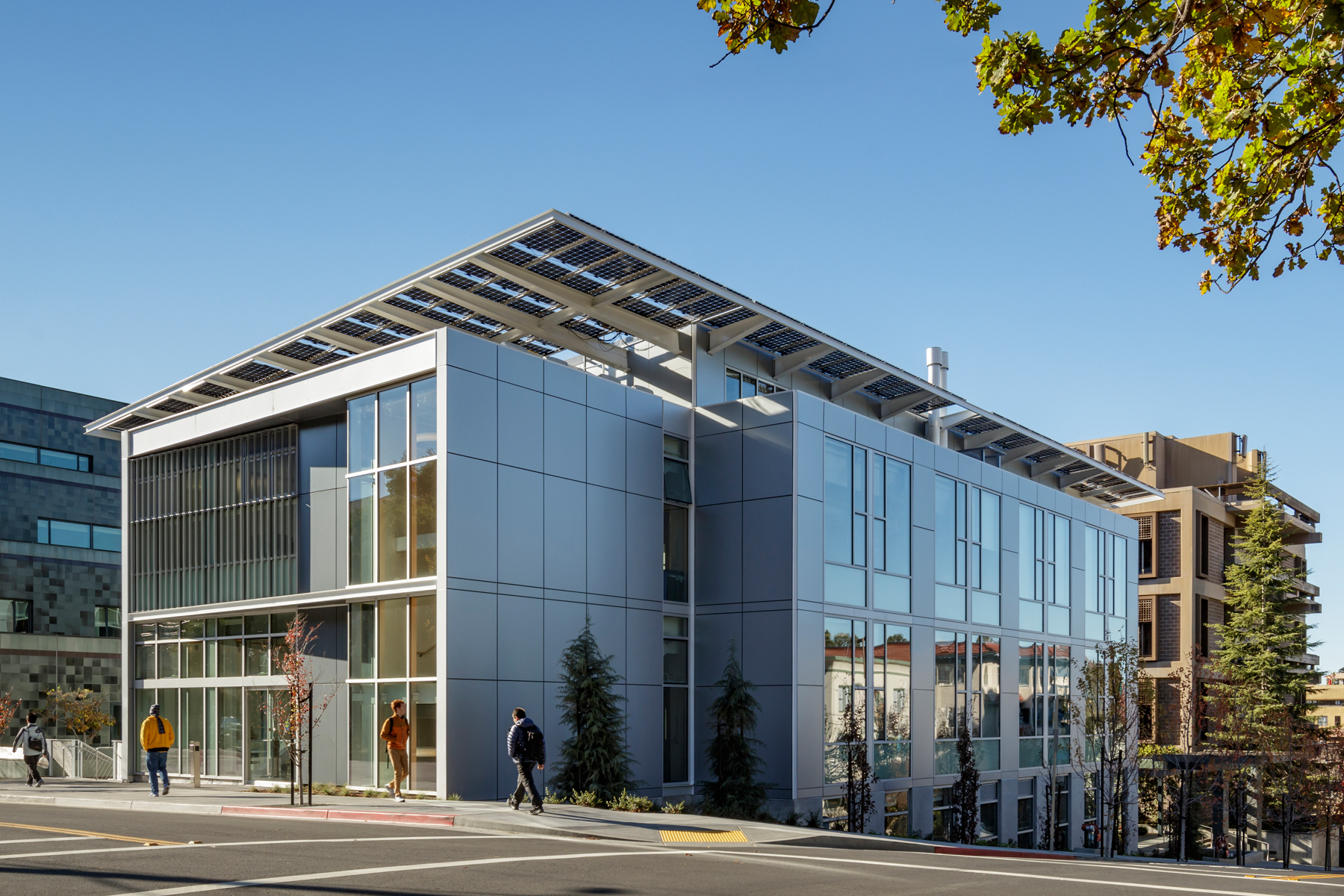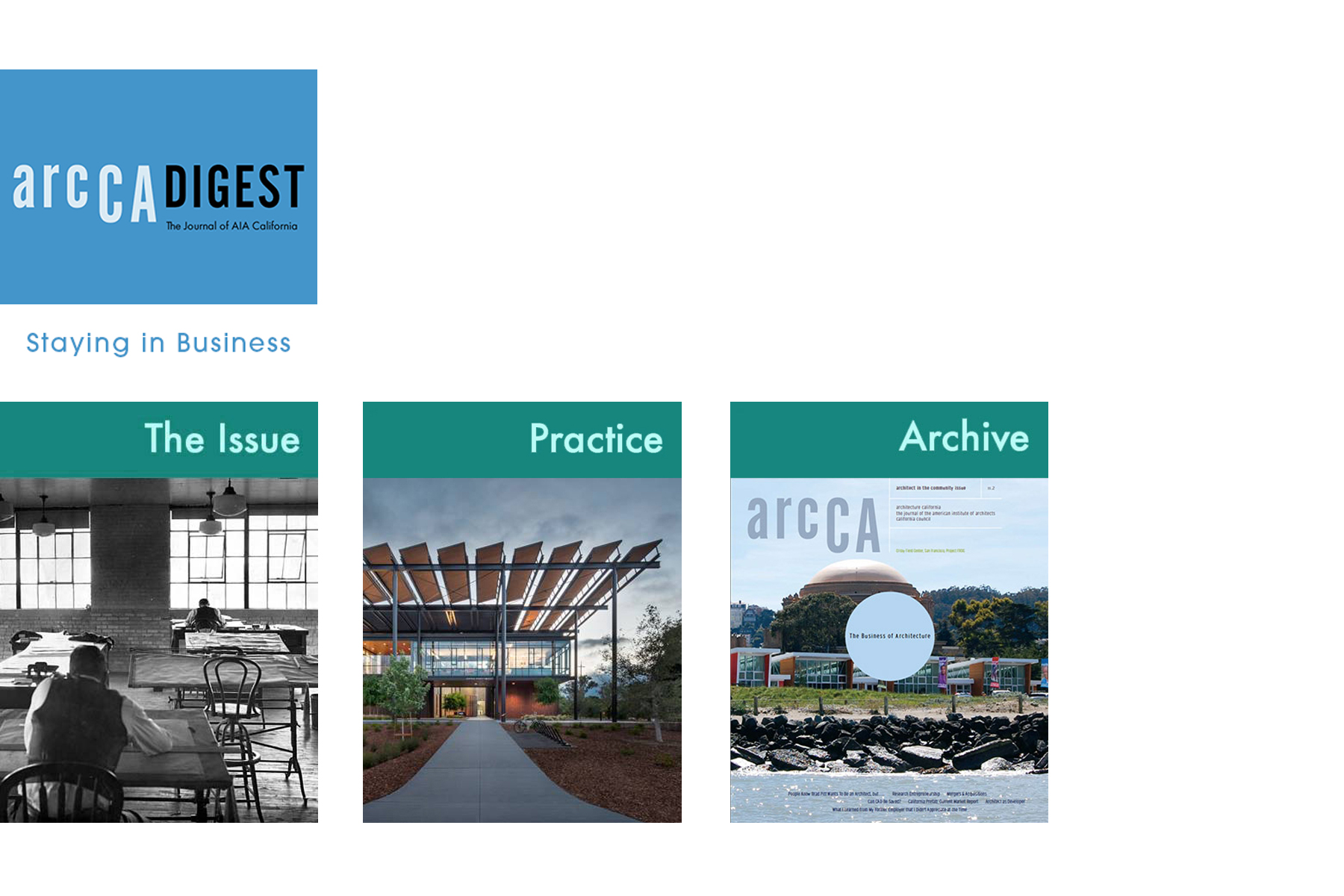Zero Carbon Architecture: the Business Case

Originally published by arcCA Digest: The Journal of AIA California and written by William Leddy

There has been considerable discussion in recent years about the ethical, technical and design dimensions of rapidly moving toward mandatory zero net energy / zero net carbon architecture1 within the next decade. But there has been too little discussion of the business case. In our current polarized political culture, there are two predictably opposing positions on this subject: Is this transformation in the way we design and build a radical, expensive and possibly unnecessary disruption of the business of architecture? Or is it an urgent, unavoidable adaptation to our rapidly changing planet that offers countless positive environmental, professional and business opportunities – a textbook example of doing well by doing good?
Every successful business makes its decisions based upon hard and soft data, evaluated within the context of a prevailing business environment. In California, the business environment of architecture is changing rapidly as we approach the goals established in 2007 by the California Public Utilities Commission’s “California Energy Efficiency Strategic Plan”: all new residential construction must be zero net electricity starting in 2020; all new commercial buildings must be zero net energy starting in 2030; 50% of existing commercial buildings must receive zero net energy retrofits by 2030. While these goals might seem unrealistically ambitious to some, the dire findings of the October 2018 UN Intergovernmental Panel on Climate Change (IPCC) report “Global Warming of +1.5˚C,” followed in November by the US Government’s “Fourth National Climate Assessment,” confirm that inaction is not a viable choice. Climate change is here and the impacts are accelerating faster than previously predicted. The IPCC report concludes that avoiding catastrophic climate impacts requires “a rapid and far-reaching transformation of human civilization at a magnitude that’s never happened before.”
Waiting until 2030 to de-carbonize buildings in California is clearly waiting too long. More than 850 billion square feet of new construction is expected globally between now and 2030, making the challenge of reducing global greenhouse gas emissions even more daunting. Ed Mazria, FAIA, founder of Architecture 2030, recently wrote: “We are heading into an extremely dangerous period. If we do not take action now, the planet will overshoot 2 degree C warming by a wide margin with consequences that are projected to be devastating to California, our country, and the entire world.” Given California’s position as the fifth largest economy in the world and an international leader in climate and energy policy, a change in our building codes to require all buildings to be zero net carbon well before 2030 will provide an inspiring, pragmatic example for the rest of the world to follow.
To expedite this effort, Architecture 2030 and Charles Eley, FAIA, recently developed the ZERO Code for California, which provides a regulatory overlay of existing California building codes that, if adopted, would lead to accelerated de-carbonization. It consists of two parts: Part 1 is the current California Energy Code, Title 24 2019. Part 2 – an overlay to Part 1 – details the pathway for procuring on-site and/or off-site renewable energy and incorporates hourly source energy that tracks with existing carbon emissions guidelines in California. If the ZERO Code is adopted in California, advanced energy efficiency and de-carbonization will no longer be perceived as an option only for the environmentally aware and wealthy elites – it will become a requirement for everyone. When this happens, three important transitions will be set in motion that will deliver multiple benefits – for our communities, our businesses and our planet:
Technological advancement and cost reduction: When regulatory landscapes shift, businesses adapt. The innovative power of our free enterprise system will be unleashed, developing new and cheaper zero carbon technologies and materials. Existing technologies will become more efficient and economical; as-yet unimagined building systems will be developed to meet rapidly expanding market demand. One example of this effect is the solar electric industry. Despite inconsistent political support over the years, a recent MIT study reported that the cost of photovoltaic modules plummeted by 99% between 1980 and 2018, while commercially available module efficiency grew from 8% to 22% during the same period. NREL recently announced that researchers have successfully achieved a photovoltaic cell efficiency of 46% in the lab, forecasting radical advancements in the coming years. According to Forbes Magazine and other sources, the cost of solar electric energy is already less than the cost of fossil fuel and nuclear energy production. Requiring all buildings to be net zero carbon will only accelerate renewable energy research and development, transforming these once exotic technologies into standard equipment for everyday life.
Innovative financing: Tax incentives, carbon credits and other innovative financing mechanisms will be further developed to make deep energy retrofits of existing buildings and new low-carbon building systems accessible to everyone. Government tax incentives for solar energy adoption have already been a major factor in the success of the solar industry – and these should continue. Meanwhile, many other programs are being developed around the country to democratize clean energy, reduce energy poverty, and expand access and affordability of resource efficient homes to low and moderate-income families. In June 2018 the Hawaii Green Infrastructure Authority (HGIA) launched its Green Energy Money $aver On-Bill Program that offers renters and low-income utility customers a low-cost on-bill repayment system to finance eligible clean energy improvements. Since 2012, Fannie Mae has offered the Multifamily Green Bond program that provides innovative financing solutions for energy and water efficiency wrapped into traditional mortgage lending. New and retrofitted green multifamily buildings under this program are estimated to have already contributed $7.2 billion in worker’s income while reducing water use by 5.9 billion gallons and greenhouse emissions by 287,000 metric tons. As the zero carbon economy expands, financial institutions will continue to find innovative ways to serve it, and architects will benefit greatly.
Job creation: While the transition to zero carbon architecture may be challenging for some, there are strong indications that the net economic impacts will be overwhelmingly positive. The UN’s International Labor Organization recently predicted that the green economy will generate 18 million new jobs globally by 2030. Influential global market analysts FTSE Russel reported last June that the value of the US green economy is expected to grow from $4 trillion today to $90 trillion by 2030. And according to a Bloomberg analysis of US Bureau of Labor Statistics employment projections, over the next decade “jobs for solar panel installers and wind turbine technicians will grow twice as fast as any other occupation.” When every new and existing building in the state is required to meet zero carbon performance criteria, architects are the experts best positioned to lead this dramatic transformation. On the other hand, if we do not take a strong leadership position on this issue, others are ready to take our place.
An historic, rapid transformation of our built environment to zero net carbon emissions is absolutely crucial if we are to secure a resilient, hopeful future for our children and grandchildren. Architects should not fear this future – we should enthusiastically embrace it as a groundbreaking moment for leadership in our communities, for greater meaning and relevance in our work, and for untold growth in our marketplace.
Zero net carbon architecture is simply good business. Let’s seize the opportunity.
1. Zero net carbon architecture is defined by Architecture 2030 as “a highly efficient building that produces on-site, or procures, enough carbon-free renewable energy to meet building operations energy consumption annually.”
Bill Leddy, FAIA, is a founding principal of LEDDY MAYTUM STACY Architects in San Francisco. He was the 2013 chair of the national AIA Committee on the Environment.